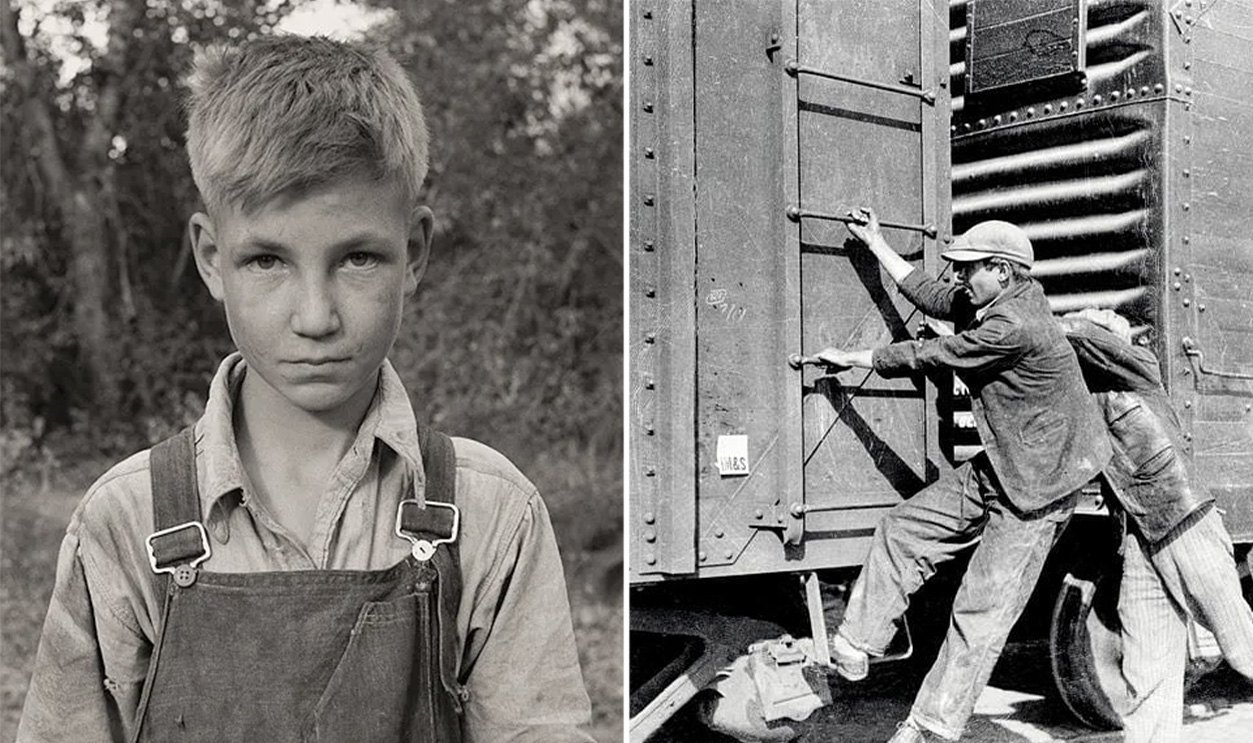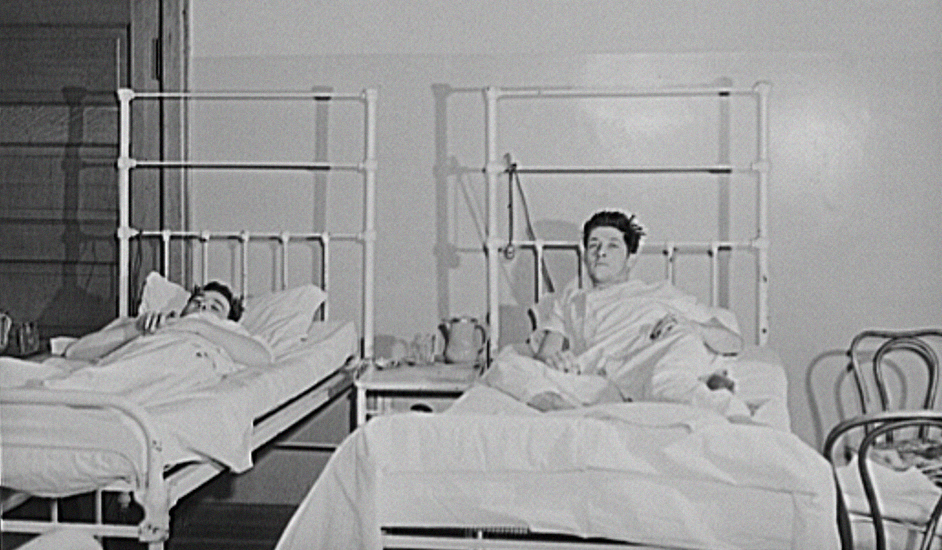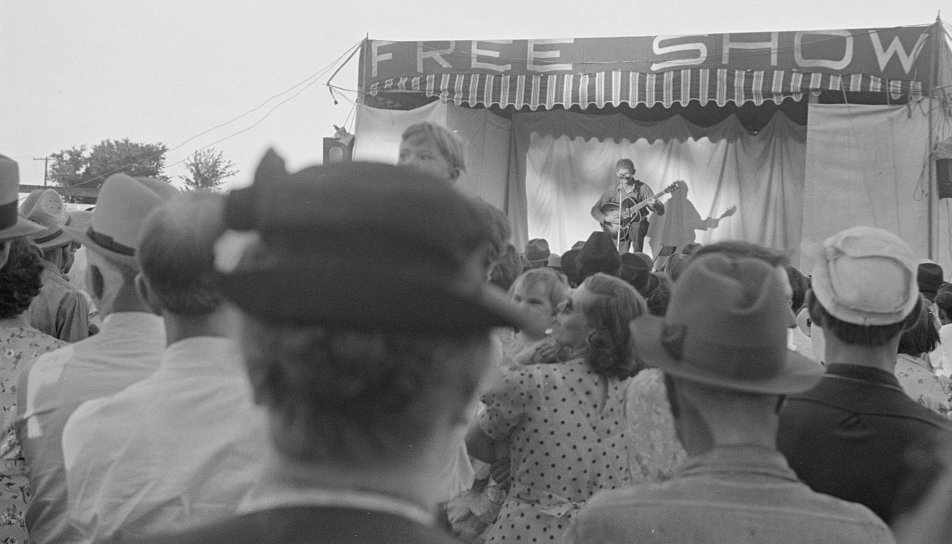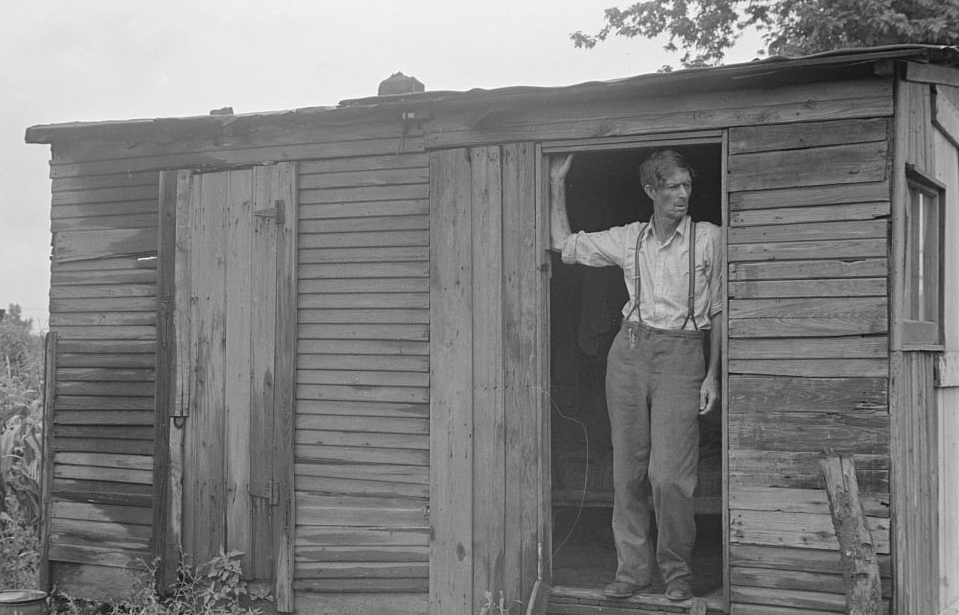The Great Depression: How Did It Happen?
On October 29, 1929, known as Black Tuesday, stock prices crashed, triggering a financial panic. The resulting Great Depression thrust millions into an economic struggle marked by severe unemployment, dramatic drops in incomes, and widespread shortages of necessities.

The Ripple Effect
The stock market crash triggered a wave of bank failures as folks hurried to withdraw their funds in fear of insolvency. With savings and jobs disappearing, consumer spending plummeted. This drop in demand hit businesses hard, resulting in layoffs and a downward economic spiral.
 Topical Press Agency, Getty Images
Topical Press Agency, Getty Images
Loss Of Financial Security
Rising debts, economic uncertainty, and job losses made it difficult for people to meet their financial obligations, deepening their economic hardship and resulting in bankruptcy or foreclosure.
Economic Hardship And Struggling To Make Ends Meet
In the Depression, wages and salaries sank to new lows. Businesses failed, meaning they had to lay off workers. Having to reduce their expenses meant most people faced severe challenges covering basic living expenses.
Job Insecurity In The 1930s
The Great Depression saw unemployment rise to astronomical levels. Millions of people were left without work, contributing to widespread economic suffering. Unemployment rates soared to alarming levels, peaking at around 25% in the United States.
Unemployment And Efforts To Find Work
People searched tirelessly for available employment, frequently accepting lower-paying or temporary jobs. A strained job market left many individuals struggling to secure even the most basic employment opportunities. As job opportunities dwindled, maintaining stable housing became a growing concern for many during the Great Depression.
 Sunday Truth, Wikimedia Commons
Sunday Truth, Wikimedia Commons
Housing And Living Conditions
Housing and living conditions deteriorated significantly during the Great Depression. Many people faced eviction and displacement, leading to overcrowded and inadequate living spaces in makeshift communities or shantytowns.
Foreclosures, Evictions, And Shantytowns
Many families who had lost their homes due to insolvency could not find alternative housing because of sky-high rent costs. With no other housing available, they relocated to makeshift shelters in Hoovervilles.
 Hmalcolm03, CC BY-SA 4.0, Wikimedia Commons
Hmalcolm03, CC BY-SA 4.0, Wikimedia Commons
Housing And Living Conditions: What Is A Hooverville?
Hoovervilles were named derisively after President Herbert Hoover, whom many blamed for the economic crisis. These makeshift shantytowns were built by homeless people, using material scraps to construct these communities. As housing conditions worsened, the struggle for necessities like food became even more pressing.
 Seattle Municipal Archives, CC BY 2.0, Wikimedia Commons
Seattle Municipal Archives, CC BY 2.0, Wikimedia Commons

History's most fascinating stories and darkest secrets, delivered to your inbox daily.
Food Shortages And Government Assistance
People struggled to afford adequate food, and there was widespread suffering from malnutrition and health problems. Soup kitchens and food lines provided crucial support, though often inadequate. The Federal Emergency Relief Administration (FERA) and, later, the Works Progress Administration (WPA) distributed food aid as part of their mandate.
 National Archives and Records Administration, Wikimedia Commons
National Archives and Records Administration, Wikimedia Commons
Healthcare And Medical Services Were Limited
Sweeping poverty and unemployment made it difficult to afford medical services, insurance, or essential treatments. Economic strain reduced public and private healthcare resources, further limiting access to care for those in need.
Relying On Charities For HealthCare
Charities provided limited healthcare. Community clinics, free medical camps, and volunteer doctors aimed to offer primary medical care, emergency treatment, and preventive health measures. As the impact of the Great Depression deepened, the strain on public resources also began to affect other critical areas, including education.
Schooling At The Beginning Of The Depression
School districts quickly found themselves grappling with debt. As the economic situation deteriorated, schools shut down, teachers faced salary reductions, and schools reduced the range of subjects offered. Any previous plans for expansion and reform were put on hold.
Education And Schooling At Decade’s End
Despite the Depression halting many of the educational advancements of the 1920s, it also spurred change and reform. Schools gained more control over their spending with reduced budgets, leading to curriculum reforms, standardized textbooks and testing, and the merging and collaboration of school districts to cut costs. By the decade's end, the education system had become more modern, professional, and equitable.
A Drastically Different Childhood
During the Great Depression, children stopped attending school and worked to help their families. Those children working to support their families often faced hazardous conditions—everyone who could work sought work. Children bore the brunt of poverty, with many parents sending them to beg for food at restaurants and stores to avoid the stigma of begging themselves.
Life At Home During The Great Depression
As childhood experiences shifted dramatically during the Great Depression, the roles and expectations for women in the home also underwent significant changes. Many households had to adjust to diminished resources, resulting in shifts in family roles and daily routines as they struggled to cope with the financial challenges.
The Self-Sufficient Household
"Use it up, wear it out, make do, or do without" was a mantra during the Great Depression. It encouraged extreme frugality by emphasizing repairing and reusing items rather than replacing them or purchasing new ones. Many families cultivated small gardens to achieve greater self-sufficiency.
Families And Communities Adapting Together
Potlucks, frequently organized by churches, became a well-liked and economical way to share meals and socialize. Some towns and cities converted vacant land into community gardens, allowing residents to cultivate food.
Domestic and Social Responsibilities Before 1929
The evolving demands of daily life during the Great Depression significantly reshaped the roles and responsibilities within the home and community. Before 1929, women typically focused on managing the household, caring for children, and supporting their husbands. They were primarily responsible for domestic duties such as cooking, cleaning, and maintaining the home.
Women In The Workforce Before The Depression
Society's attitudes toward family roles led to married women experiencing the Depression more acutely than others. Although single women had progressively entered the workforce since the early 20th century, many believed married women worked out of choice rather than necessity—but that choice went out the window in 1929.
Depression-Era Employment For Women
Women worked during the Depression out of necessity to support their families and make ends meet. Employers were less inclined to hire married women and more prone to terminating those already on the payroll. Some criticized married women for taking jobs while many men were unemployed.
The Typical Job For A 1930s Woman
Women commonly filled roles that society believed were unsuitable for men. They found employment as teachers, nurses, secretaries, and telephone operators but often received lower wages than their male colleagues.
 Keystone View, Wikimedia Commons
Keystone View, Wikimedia Commons
Women's Roles And Domestic Responsibilities
Despite their outside work, women continued to manage the household, often under stressful conditions. As women's roles evolved in response to the economic pressures of the Great Depression, people sought new ways to find solace and entertainment amidst the changing circumstances.
Depression Era Entertainment: From Glamour To Grit
During the Great Depression, entertainment provided a vital escape from the pervasive hardships of life, offering people much-needed relief and a sense of normalcy. Before the Depression, movie theatres were a popular pastime. But after the stock market crash, the cost became prohibitive for many, leading to the closure of over one-third of cinemas in America between 1929 and 1934.
The Transformation Of Entertainment
Families increasingly turned to board and card games for affordable entertainment, as movie-going was now a rare luxury. These pastimes became popular social activities, providing diversion and a sense of togetherness during challenging times.
The Radio Revolution
Radio entertainment emerged as a crucial and affordable source of entertainment, offering various programs, from serial dramas to comedy shows. Radios became central to home life, providing families a much-needed escape and connection to the outside world.
The Struggles Of Poverty
While entertainment provided a much-needed respite during the Great Depression, the stark reality for many was the struggle to meet basic needs. People were categorized as the "deserving or undeserving" poor and faced significant hardships.
Distinguishing Those In Need
The "deserving poor" were those judged to be in need due to uncontrollable circumstances, such as job loss or disabilities, and were viewed as morally upright and hardworking. In contrast, the "undeserving poor" were seen as responsible for their situation due to behaviors like financial mismanagement or lack of effort.
The Challenges Of Giving And Receiving Assistance
Faced with a lack of federal aid, Americans sought help from private charities, religious organizations, and state-level assistance. However, organizations were not equipped to handle the scale of the crisis.
Government Relief Programs: New Deal Programs
The government created programs to help the country survive these issues. The Civilian Conservation Corps (CCC) provided employment opportunities and general relief assistance. Another program, the Works Progress Administration (WPA), had the same mandate.
The Psychological Distress
This dark era took a severe toll on people's mental health. At the time, men were the primary breadwinners—responsible for keeping their families afloat. Faced with the hard truth that they couldn't meet these expectations, some made horrifying decisions.
 National Archives, Wikimedia Commons
National Archives, Wikimedia Commons
The Disturbing Consequences
Some people felt so hopeless that they chose to take their own lives. By 1933, the number of people making this disturbing decision had hit a record high. But this wasn't the only tragedy afflicting families.
Faltering Marriages
These hard times also profoundly affected people's marriages. Though relationships faltered, many stayed together because they couldn't afford to part ways. However, though the divorce rate plummeted, something even more nefarious was rising.
The Poor Man's Divorce
Something called the "poor man's divorce" became a frequent occurrence. This simply meant that men abandoned their families. Their reasons could range anywhere from shame to humiliation to hopelessness. However, it wasn't just the fathers who went off the rails.
Teenagers In The Depression
During the Depression, around 2 million people traveled the open road to scrounge up some much-needed dough. Most of them were teenagers. Some thirsted for adventure, while others hoped to escape their impoverished families. However, they had a shocking way of getting around the country.
Riding The Rails
“Riding the rails" refers to hopping freight trains to travel, often undertaken by unemployed and homeless individuals seeking work or a new start. With scarce job opportunities, many people, especially young men, rode freight trains to travel across the country for work.
 U.S. National Archives and Records Administration, Picryl
U.S. National Archives and Records Administration, Picryl
Riding The Rails: The Dangers
Teenagers also became frequent rail riders, seeking work and an escape from harsh home lives. But while some did this out of necessity, others romanticized riding the rails, thinking of it as a fun pastime. Yet as thrilling as it was, train-hopping was more dangerous than it was fun—falling off the train, getting crushed by rail cars, or even getting assaulted by other derelict passengers were common hazards.
The Great Depression's Influence On Finances
The experiences of the Depression shaped the attitudes and behaviors of those who lived through it. Economic hardship led to changes in social norms and expectations, emphasizing frugality and resilience.
Shifts In Social Norms And Expectations
Social norms shifted as economic hardship led to increased participation of women in the workforce. People challenged pre-existing gender expectations, altering the dynamics of family and work life.
The Historical Lesson
Society learned the importance of financial regulation, social safety nets, and government intervention in economic crises due to the Great Depression. The era highlighted the need for policies to prevent economic instability, support vulnerable populations, and ensure a more resilient financial system.







































